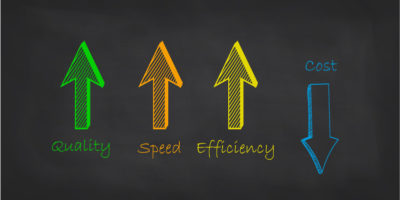
How to optimize and reduce costs in patent translation
Translating patents is often a real challenge. To understand why, it is first of all necessary to understand what a patent is: it is the bundle of rights that allows us to register a new technological process or product in a country. Most national patent offices require that your application be filed in the official national language or, if it is a regional office such as the EPO or WIPO, you can choose between local languages (e.g. English, French or German). The stakes are such that we do not even need to explain how important it is that the translation of the patent is carried out properly and by a professional expert both in the technological field related to the patent and in the patent filing process.

What must be considered in order to reduce patent translation costs?
Intellectual property (IP) translation is a necessary process when we want to extend the exploitation rights over a product, process or technology to other countries. When trading with foreign companies, this translation also plays an important role, as it does if you want to manufacture in another country: this document will protect you against possible legislative problems.
The correct wording of a patent, especially the patent claims, defines what the patent does and the scope of what you want to protect, if, that is, the competent authority agrees to approve your patent application. The claims are the part of the patent that is reviewed by the courts in the event of a patent infringement allegation, which is why patent registration offices carefully examine each claim before granting a patent.
The importance of optimizing or reducing a patent translation
The importance of patent translation optimization lies in the need for all the documentation provided to be correct, while reducing waiting times. Optimization is, therefore, a key element insofar as time and final cost are considered. And a poor translation can increase one as much as the other, on the basis that patent registration often takes a year or more. The role of a professional agency, such as SeproTec, is also important in this respect.
Why outsource to a professional agency?
If mistakes are made, the translation of a patent can be ineffective, as it becomes completely obscure. It is common for registrations to be rejected because an application has not been properly completed. Which is why a professional patent translation agency always starts from an understanding of the invention to be registered. This is the first step required for making the wording in the translation as clear as possible, with the exact and appropriate words being used combined with a thorough check of each term.
The role of a professional agency can, therefore, be honed down to three basic aspects.
- The first is to clarify the substance of the document, which is both legal and, at the same time, highly technical. Given the importance of terminology in the patent translation process, at SeproTec we only handle these projects with approved translators who are experts in the technical field related to the invention. Furthermore, we possess the highest quality certifications, ISO 9001 and ISO 17100, to ensure the quality of the final result.
- On the other hand, the text must be natural, but respecting all the content of the original, avoiding, under all circumstances, ambiguity and providing total clarity.
- By outsourcing the patent translation process to a professional language service, rather than relying on a third party provider, you will ensure effective communication, coordination, consistency and quality assurance at every step of the patent translation process.
In addition, the cost of translation can represent up to 60% of the total validation cost and up to 20% of the total lifetime cost of a patent. SeproTec works with skilled professional resources and effective CAT- and AI-based tools to increase efficiency and reduce costs while ensuring quality. The latter include translation memory tools and glossaries that are used to identify repetitive text, thereby reducing time and costs during the patent translation process.
Using a professional language provider who also has extensive experience in patent translation pays off from the word go. The risk of submitting cheap poor quality translations when filing an international patent completely cancels out the potential savings made from using a non-professional provider.
If you want to know more, contact us on this link.




